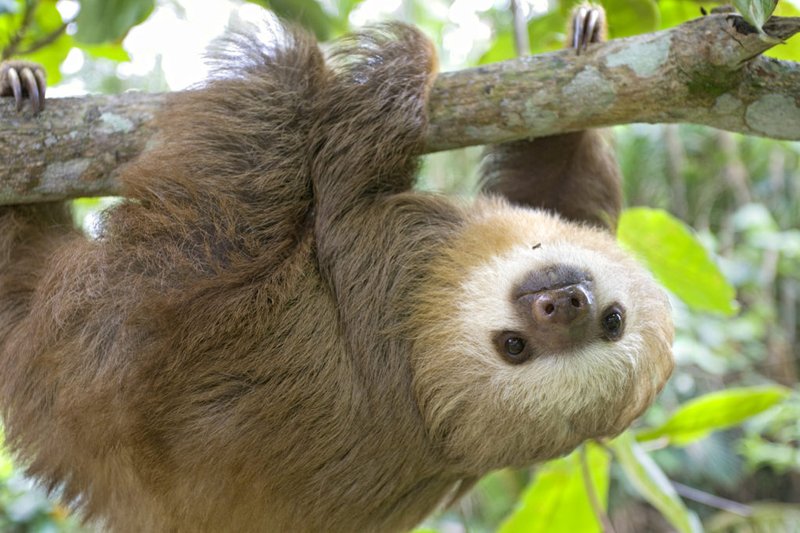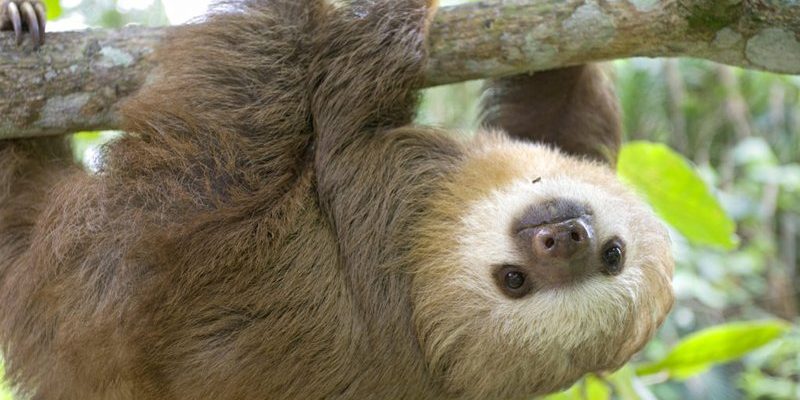
Imagine you’re on a coffee date, and you hear someone mention sloths. You might picture them as the ultimate couch potatoes, but that’s not entirely accurate. Sloths have unique lifestyles and adaptations that allow them to thrive in their rainforest homes. So, let me explain the truth behind the myths surrounding these incredible animals.
Myth 1: Sloths Are Lazy Creatures
Here’s the thing: sloths get a reputation for being lazy because of their slow movements. However, what many people don’t realize is that sloths are well-adapted to their environment. They conserve energy by moving slowly and have a very low metabolic rate, which is quite clever when you think about it!
Unlike many mammals, sloths spend most of their life hanging out in the trees, munching on leaves. They are herbivores and their diet is primarily leafy greens, which are low in calories. To maintain their energy, they don’t need to move around much. In fact, they can sleep up to 20 hours a day! But this isn’t laziness—it’s a survival strategy. Their slowness helps them avoid predators like jaguars and eagles.
So, while they may seem like the couch potatoes of the animal kingdom, sloths are just taking a very strategic and energy-efficient approach to life.
Myth 2: Sloths Are Always Hanging Upside Down
You might imagine sloths always upside down, their long claws gripping tree branches effortlessly. While it’s true they can hang upside down for extended periods, they don’t spend all their time in this position. Sloths actually have a special adaptation in their anatomy. Their internal organs are arranged in such a way that they can hang comfortably from their limbs without any problems.
When they do come down from the trees, sloths usually take their time—literally. They spend about a week in the treetops to conserve energy and only venture down to the ground about once a week to poop! It might sound strange, but this is a critical part of their routine. By doing this, they reduce the risk of becoming easy prey.
So, while they certainly employ upside-down strategies for safety and feeding, that’s just one part of their multifaceted life.
Myth 3: Sloths Are Not Good Swimmers
You might be surprised to learn that sloths are actually excellent swimmers. Despite their slow movements on land, they can move through water surprisingly fast. When sloths need to cross rivers or streams, they dive in and paddle with their long limbs. This is another fantastic example of how adaptable they are.
Did you know that sloths can hold their breath for up to 40 minutes when swimming? This is impressive considering their low metabolic rate. Swimming even helps them escape predators! They can maneuver through the water much more quickly than on dry land.
So, the next time someone says sloths can’t swim, you can confidently share that they’re not just good swimmers; they’re practically aquatic aces!
Myth 4: Sloths Don’t Have Any Natural Predators
It’s easy to think sloths are safe up in their trees, but the reality is that they do have predators. While their slimy fur helps camouflage them among the leaves, it doesn’t make them invulnerable. Animals like jaguars, ocelots, and harpy eagles consider sloths a tasty meal.
Their slow movements can make them an easy target, but sloths have developed strategies to help avoid these threats. For instance, they often remain perfectly still for extended periods, blending seamlessly into their surroundings. By doing this, they rely on their natural camouflage as a kind of armor against predators.
So, while they have a little bit of a tough life up there in the trees, they’ve learned how to navigate the dangers of the wild.
Myth 5: All Sloths Are the Same
Another common misconception is that all sloths are identical. In reality, there are two main types of sloths: the two-toed sloth and the three-toed sloth. While they share many similarities, they each have unique characteristics.
For example, three-toed sloths have three long claws on each limb and are a bit smaller than their two-toed counterparts, which only have two claws on their forelimbs. These differences extend to their diets and behaviors. Two-toed sloths, for instance, tend to eat more fruits and tend to have a slightly faster metabolism.
Understanding these differences can enrich your appreciation for these creatures. They aren’t all the same; each type has its own quirks and lovely little ways of adapting to its environment.
Myth 6: Sloths Are Related to Bears
If you ever heard that sloths are closely related to bears, you might want to rethink that idea! Sloths actually belong to a group of animals known as folivores, which means they primarily eat leaves. They are more closely related to anteaters and armadillos than to bears or any other large mammals.
This misconception likely stems from their size and somewhat bear-like appearance. But sloths are a part of the order Edentata, which encompasses these unique creatures that have evolved specialized traits to thrive in their environments. They’ve been around for millions of years, adapting and surviving through different periods of climate and habitat change.
So, while they may have a cuddly bear-like look, sloths have a much deeper, more defined lineage connected to other fascinating animals.
Myth 7: Sloths Are Always Happy
Lastly, there’s a perception that sloths are perpetually joyful, smiling down from the trees. In reality, sloths have a unique physiological makeup that lends them a somewhat relaxed and somewhat goofy expression. Their facial structure doesn’t allow for a wider range of expressions typical of other animals.
So, while sloths may appear happy, they actually experience a range of emotions just like any other creature. They can feel stress, fear, or even happiness. Their slow-paced lifestyle might seem blissful, but it’s essential to recognize the complexities within their inner lives.
Embracing the idea that sloths have varied emotional experiences can help us appreciate their role in the ecosystem even more.
Sloths are more than just cute faces hanging from tree branches. They have a unique way of living that challenges many assumptions people have about them. By understanding these common myths and misconceptions, we can appreciate sloths for what they truly are—remarkable creatures with fascinating adaptations.
So, next time someone shares a misconception about sloths, you can set the record straight with confidence! These cuddly animals deserve our admiration, not just for their quirky lifestyles but for the ecological roles they play in their habitats. Let’s celebrate the sloth, the unexpected gem of the animal kingdom!

